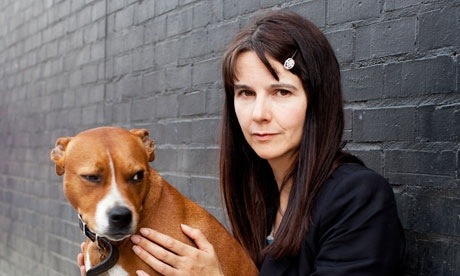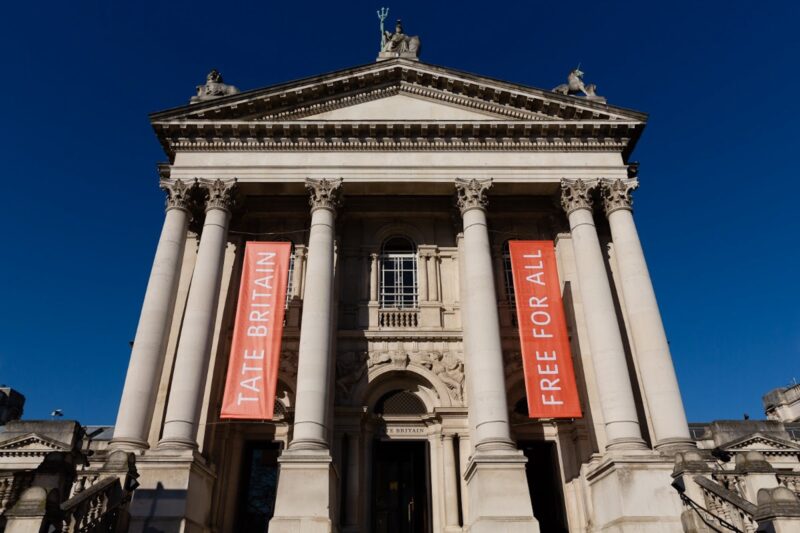
At the Turner prize ceremony in 1997, Gillian Wearing drank a bottle and a half of champagne before the main announcement. She was on the shortlist, but assumed she wouldn’t win. The whole scene was pretty overwhelming back then, she says. Interest in young British artists was at its height, the ceremony was televised, and the fascination around the prize kept building. Two years later, there would be frenzied debate over Tracey Emin’s unmade bed, and two years after that would come the screaming celebrity zenith, when Madonna turned up to hand over the award.
After Wearing’s name was read out that night, she made it to the stage, thanked her family, then drew a blank. “One of my friends lives in Amsterdam,” she says, “and he told me that the next day, in a Dutch newspaper, they wrote that: ‘A very inarticulate person won the Turner prize.'”
Wearing laughs uproariously. She has an abiding fascination with articulation, with the ability to communicate clearly, honestly, succinctly; much of her work, which will be collected in a retrospective at the Whitechapel gallery next year, has involved drawing out people’s most private thoughts, eliciting confessions about the events and ideas that hulk darkly around our subconscious. After finishing her art degree at Goldsmith’s in 1990, for instance, she began the project Signs That Say What You Want Them to Say and Not Signs That Say What Someone Else Wants You to Say, in which she approached people in the street and asked them to write something on a piece of paper and then be photographed.
The work involved breaking down inhibitions; both hers and theirs. “You just feel like an idiot stopping people in the street,” she says. “You think: why am I actually doing it?” Her answer came when a man she approached, the very image of a well-groomed, self-satisfied banker, scrawled “I’m desperate”, and held it up for the camera.
In her first film for the cinema, Self Made, released on Friday, Wearing encourages seven people to explore the hidden sides of their nature, the alter egos and fantasy figures they keep private; it’s an extension and progression of some of her earlier video projects. In 1994, for example, she placed a small ad that read: “Confess all on video. Don’t worry, you will be in disguise. Intrigued? Call Gillian.” The ad copy became the title of the piece. From behind masks, and beneath wigs, individuals confessed to putting scabs on their boss’s pizza, having sex with prostitutes, making dirty phone calls, stealing a school’s computer. The video is by turns fascinating and chilling. She returned to similar territory with Trauma, in 2000, and Secrets and Lies, in 2009, in which nine masked people confessed to everything from drinking menstrual blood to murder.
‘Suddenly, people were crying’
Self Made started with another advert, reading: “Would you like to be in a film? You can play yourself or a fictional character. Call Gillian.” Two thousand people replied, and Wearing whittled them down through a series of auditions. The final seven took part in a three-week Method acting workshop, a process that would open them up and strip them bare, leading to the moment when they each performed a short, scripted drama based on their own idea – what Wearing calls their “end scene”, five of which are in the film.
There has been a mixed reception since the film started screening at festivals last year; not surprising, since it is an emotionally wrenching, uncompromising, sometimes horrifying piece of work. It is also incredibly powerful. In one early scene, the group is simply doing breathing exercises – sounding long, constant notes, and then huffing hard – and it seems so primal it’s no surprise when some eventually burst into tears. It was a scene like this that Wearing encountered when she attended her first ever Method workshop with Sam Rumbelow, the acting coach who appears in Self Made. He started talking to the group about drinking a cup of coffee, trying to stir up their memories, “and all of a sudden I saw people shaking,” says Wearing, “and their backs shuddering, and they were actually crying. There was an emotional outpouring, which is really just about people relaxing and admitting, ‘OK, let’s not pretend I feel happy. I feel sad.’ It’s a kind of emotional truth.”
In Self Made, these sessions lead the participants in vastly different directions. The two women’s end scenes explore their feelings of being unloved; the three men’s are violent – one a moment of grotesque, elemental aggression against a pregnant woman. As the filming of this last scene came closer, Wearing grew more and more worried, “because it was a very extreme idea, and I was having cold feet. I said to him myself, ‘You can change your idea’, but he was really keen, and as soon as I knew that it was important to him, and that he really wanted to do the piece, I was completely behind it.”
Wearing is clearly brilliant at opening people up to this very deep level of communication, yet over the course of our interview in her studio she describes herself as “totally inarticulate” three times, as well as “completely”, “really” and “very” inarticulate. She’s referring mostly to her earlier days, to growing up in Birmingham, the middle child of a butcher mother and TV salesman father. She “hated senior school with a vengeance”, she says, losing interest in books after starting at a comprehensive that pioneered large class sizes. Wearing didn’t really read between the ages of 11 and 28, and so her ability to construct sentences suffered arrested development.
When Arbus met Greer
She left school with no CSEs, having been demoted from O-level classes six months before the exams. In her early 20s she started secretarial work at an animation studio, decided she liked the look of what her bosses were doing, and went to study for a BTEC at Chelsea College of Art and Design. (Her lack of O-levels was overlooked by an administrator who asked for her star sign, and nodded approval at the fact she’s a Sagittarius.) She made a friend at Chelsea who felt her inarticulacy was “a sign of intelligence. He couldn’t understand what I said, because I had a Birmingham accent and I mumbled a bit, so he thought I was saying something far more interesting than I actually was. When I got more articulate, he found me less interesting.” She laughs again, hard. “The subliminal messages had disappeared.”
She says all this swinging back and forth on her chair, legs corkscrewing around one another, long hair secured with a sparkly clip. She is in her late 40s, but only her salt and pepper eyebrows speak against her girlishness. Her inarticulacy seems consigned to the past. We have a great conversation, engaged and engaging, and it’s only when I play back the tape I see her point. She tells me she talks too fast – she once walked out of a question-and- answer session, hurt after an audience member shouted “We can’t hear you” – but this is only half the story. Her words slow down and speed up, her Birmingham accent segues in and out, she talks clearly one moment, mumbles the next. At one point her voice becomes childlike, recalling her 1997 work, 2 into 1, in which she had a mother mouth a tape recording of her young twin boys describing her, and the boys mouth a tape of their mother describing them. I realise there’s something faintly clamorous about Wearing – as if a whole group of people were struggling to break through her skin.
Over the last decade, Wearing has been working on a series in which she recreates photographs, using prosthetic masks to exactly reproduce old, often formal, family portraits. Her eyes stare hauntingly from within the image of her mother, father and brother. She has also taken photographs of what she calls her “spiritual family”, masked up to resemble Diane Arbus, Robert Mapplethorpe, Andy Warhol.
When I ask what scene she would have acted out herself in Self Made, Wearing says she would have appeared as Arbus, and tried to recreate a scene from the early 1970s, when the photo-grapher took a portrait of Germaine Greer. She notes that Greer didn’t enjoy the session, “and I just thought that would be interesting, that relationship, two very powerful, strong women, in the same room together”. She should write to Greer and ask her, I say. “That is what I’d like to do. I’ve always been tempted to write that letter.” It’s just a question of finding the words.
guardian.co.uk © Guardian News & Media Limited 2010
Published via the Guardian News Feed plugin for WordPress.









